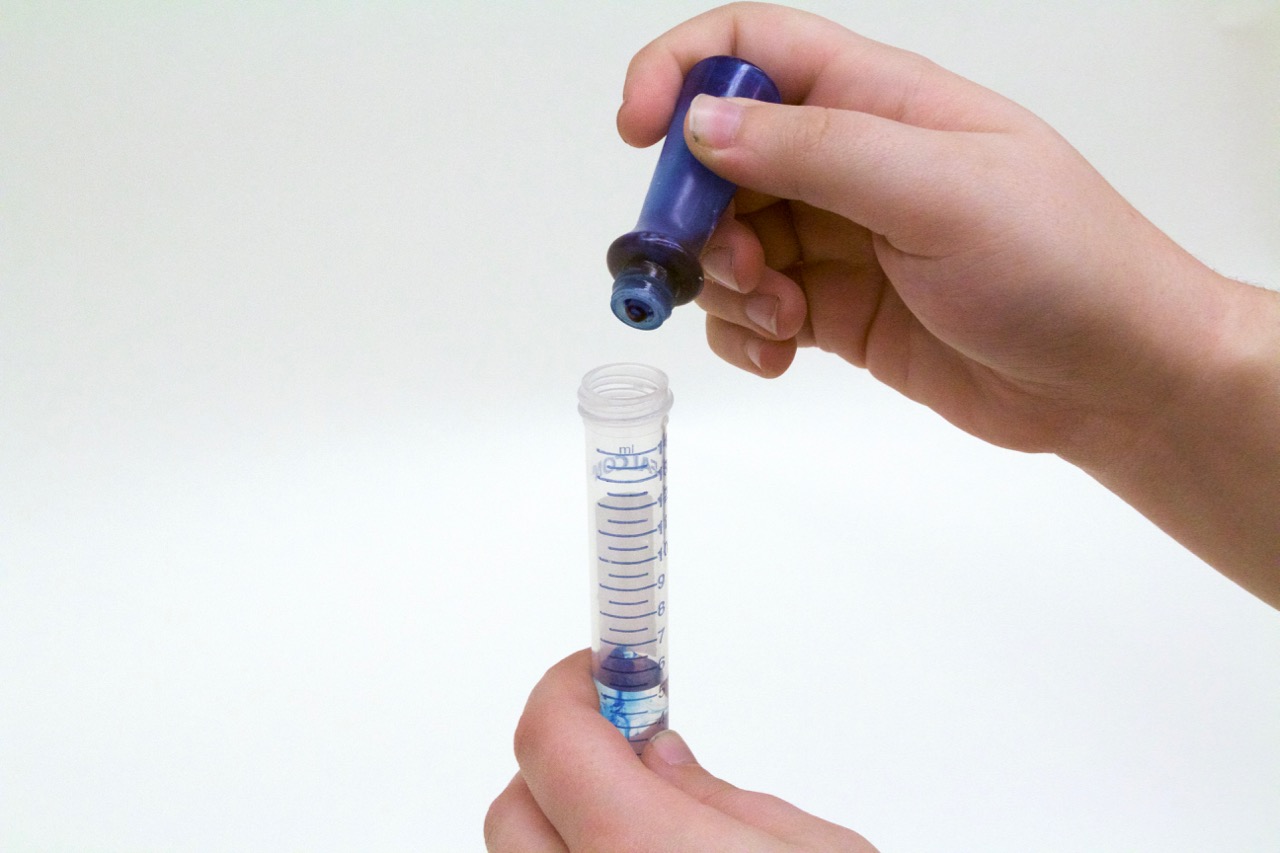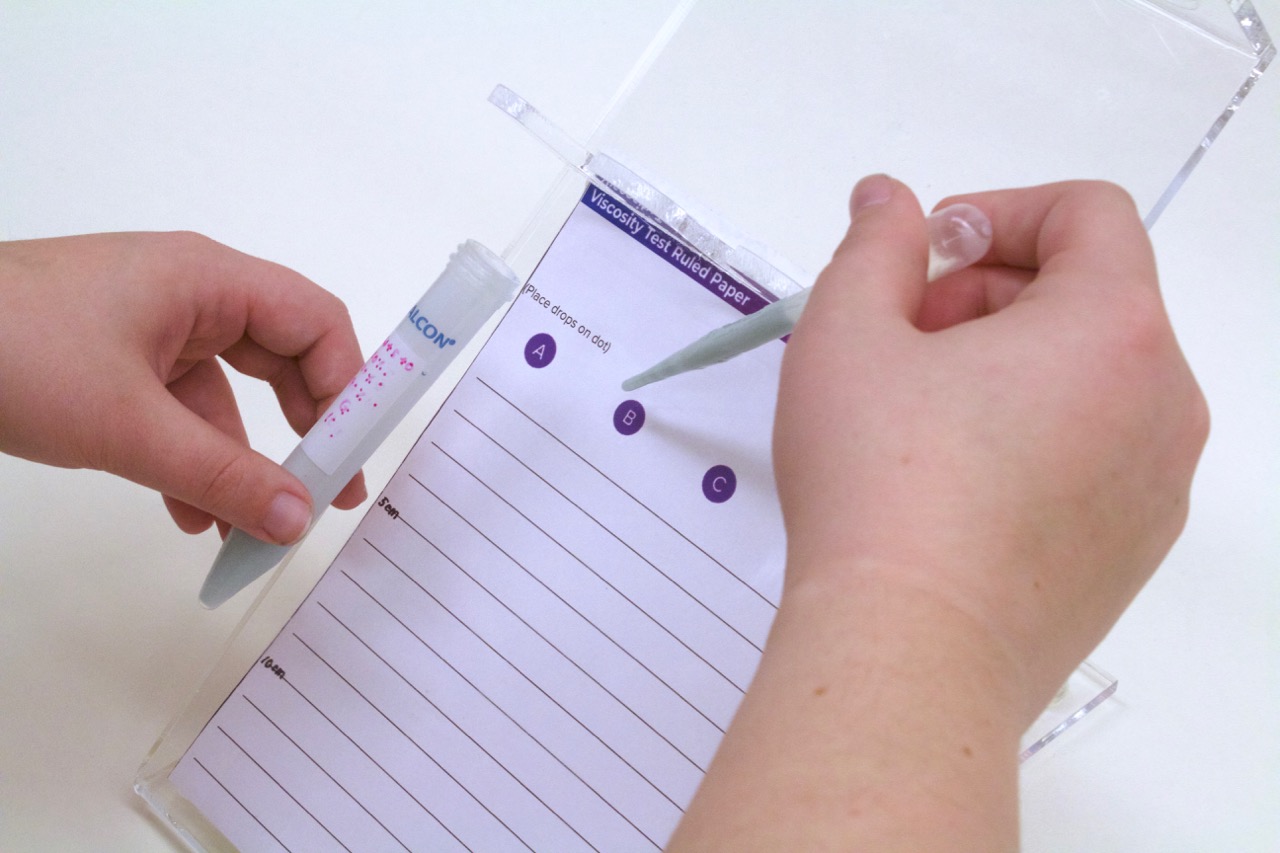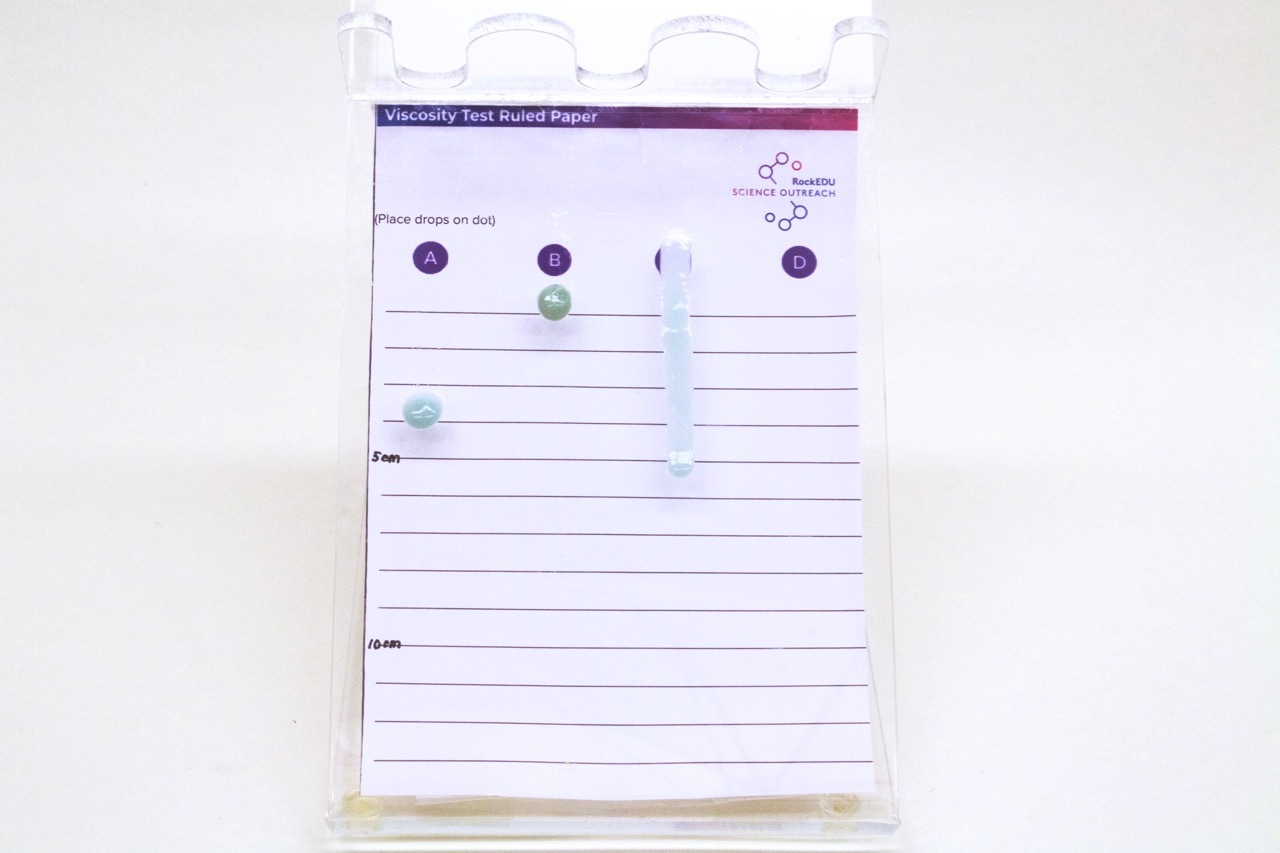A Viscosity Test to Characterize Emulsions
One way to characterize emulsions.
There are various ways to measure viscosity and you can always get creative as long as you can find a way to correlate your method with the stickiness of the emulsion. Here we used an acrylic pipette stand for a slanted surface; however any flat, smooth surface at an angle could work. In addition to the slope method, viscosity can be measured by a falling ball viscometer, viscosity cup, capillary viscometer, and so forth.
Materials
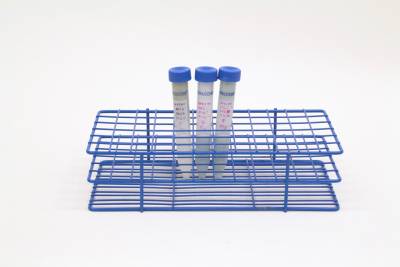
Samples
- Emulsions that you want to test
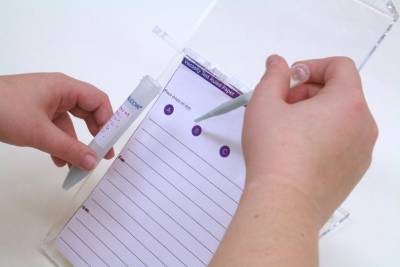
Equipment
- Pipette stand/clear smooth surface
- consistometer paper (found in Downloads)
- pipette
- pen
- calculator
Protocol
- Using a pipette, take up a bit of the sample.
- While tilting the pipette stand/clear surface so the incline part becomes parallel to the floor, drop appx. 2-3 droplets of the sample on top of one of the four purple dots (make sure the sample fits the dot).
- Angle the surface to begin the experiment while simultaneously starting the timer for 30 seconds, and mark/record how far each sample goes at the end of the 30 seconds.
- Take the multiplicative inverse (1/distance) of the distance traveled by the sample to approximate viscosity.
- Record the viscosity category according to the standards below (in units of cm-1).
- <0.2 : Low Viscosity
- 0.2-.0.5: Medium Viscosity
- >0.5: High Viscosity
- Compare viscosity values with other groups and your lotion. What can you hypothesize about the relationship between viscosity and emulsion state?
Previous
Classify Simple Emulsions

